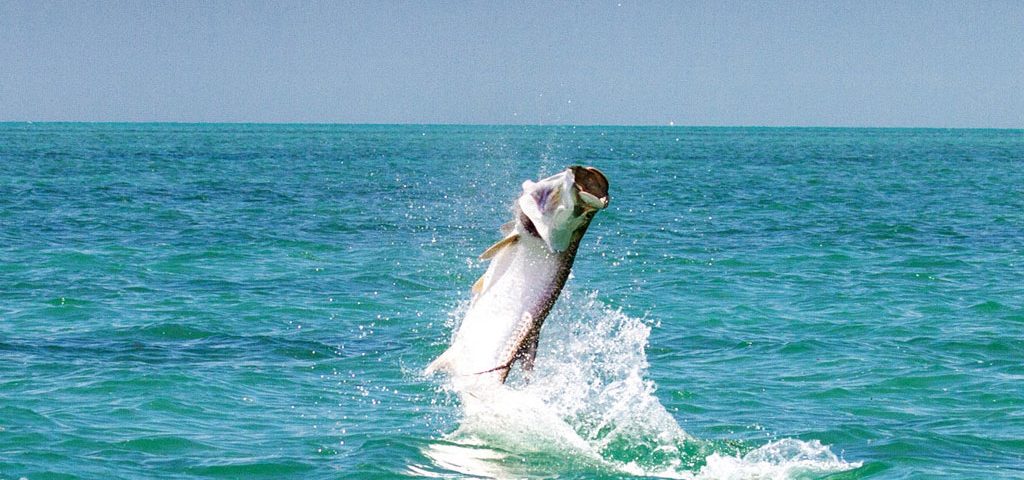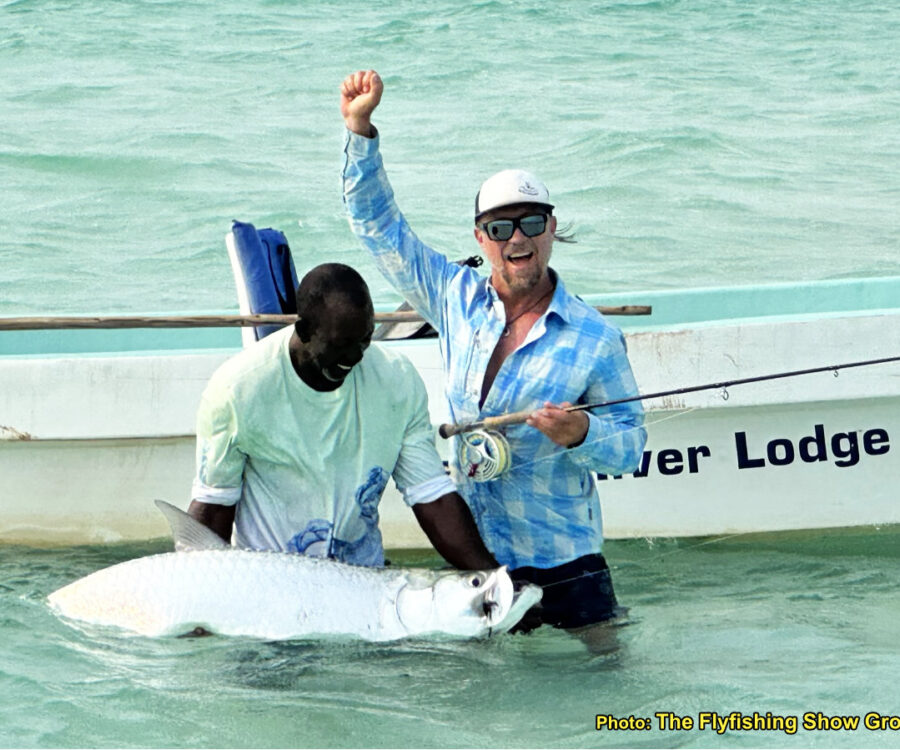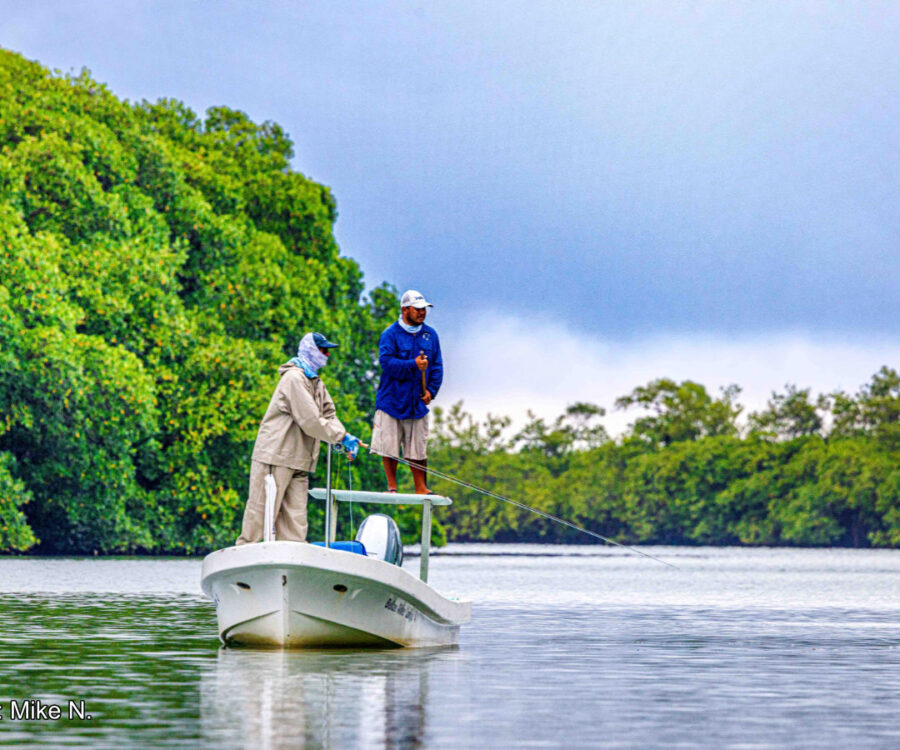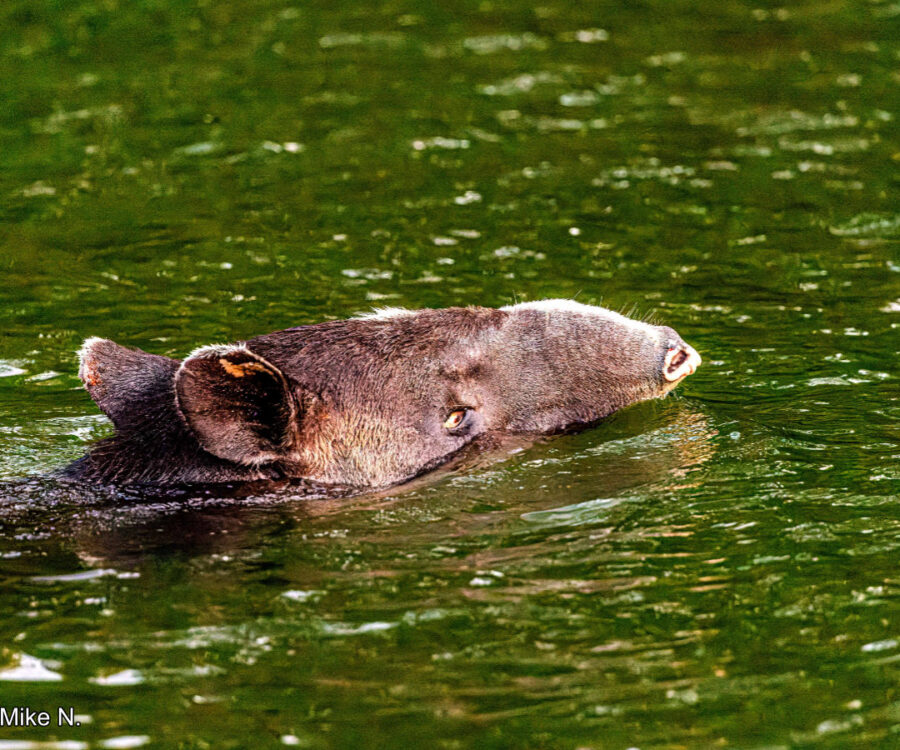During the past season, we accounted for the most number of large tarpon caught; and for some of the largest ones as well! Between the months of March through May, the Belize River mouth and the Tarpon Cove area were very successful and productive areas. On almost any day, one or two large tarpon were released ranging anywhere between 90lbs to 175lbs. The largest one been recorded to weigh 180lbs.
We found that 95% of our large tarpon were caught here simply because every day the skiffs head out to the flats areas and they have to go through the Belize River mouth and by Tarpon Cove, so always stop to fish to these large fish. The large Tarpon were in such great numbers that the anglers and guides could not miss them on their way out to the Flats. To tell you how good it was, is that the only anglers that did not jump any big fish were the ones that actually thought that to hook up with one of these Silver Kings was too much work and actually refused to throw a fly in these areas. The most effective fly was the one us BRL guides call “The Chicken” but in general, these fish were very hungry for large dark flies.
We also accounted for more Permit being landed and for some of the biggest as well. Some anglers caught as many as 5 Permit a day and some caught Permit as big as 30lbs. Many of these Permit were caught on the flats nearby to BRL, which are about 20 minutes away from the Lodge. Not only were we seeing bigger Permit, but also Permit in very large schools – approximately a couple hundred fish in a school.
The mangroves were also responsible for some very nice Snook and baby Tarpon. The Snook ranged from 6 lbs up to 15 lbs and the baby Tarpon ranged from 10 lbs up to 25 lbs. Great fish to fight! The bonefish were not forgotten for they were the sure catch for most anglers that needed this fish to complete either their Grand slam or Super Grand Slam.
To wrap things up. . . this was a Grand Slam season! The Lodge had one or two almost any week except for one week in March, when one guest actually had six Grand Slams.
When the rainy season is here, it is just a matter of time before the rivers flood. Starting as early as the first week in June or as late as in the last week, our first rains come down. As soon as our rivers flood the large tarpon that are found near the Belize River mouth tend to move to other fishing grounds.
The rainy season, approximately July through November, is when we spend more time fishing for the small to medium tarpon that range from 10lbs up to 50lbs. We also run across some of our resident big tarpon from time to time. We are still mainly fishing the flats and of course the mangroves which are where most of the juvenile fish are found. Our faithful and dependable bonefish are almost always around to remind you of that screaming sound your reel makes when there is a fish at the end of your line.
July thru November is also the time of the year that we can also run about 25 miles up the Belize Olde River and fish the famous Black Creek, where a lot of the small tarpon move to when the river floods. Many anglers have had as many as 30 baby tarpon hooked in a day and released as many as 10 baby tarpon. The boat ride to Black Creek is usually spectacular as you are entertained by many different species of birds along with the iguanas, howler monkeys, turtles and crocodiles, which all call the Belize Olde River home.
Come December, the weather changes and makes conditions better for Snook fishing. This is the time of the year that the cold fronts (temperatures in the mid 60’s to low 70’s) from up north work their way across the Yucatan and down to Belize. These fronts are responsible for the lower tides that force the Snook out from under the mangroves into the more exposed areas. The small creeks and rivers run out fast, flushing a lot of fish onto the flats as well.
The nicest thing about December is that the temperature is cool except for a little bit of rain sometimes at the head of these fronts and on any given day you can still have a shot at the Super Slam!
2010 is around the corner and many of our guest remember those unforgettable moments they had when they were in battle with the mighty Silver King and they cannot wait for their next encounter. The flash backs of that leaping giant that elevates itself up to 8 feet high and seems to stay suspended on the air for a very long time makes many anglers even more anxious to get back to Belize River Lodge.
All the black sickle shape tails of the Permit moving restlessly on the flats and feeding as if the end of the “Flat” is near, have many anglers full of anxiety to get on the plane and come to Belize and fish the BRL flats.
For those laid back anglers who do not need to be as intense in their fishing, they can always chase the less illusive but very strong Bonefish which are known to many of us as the “Ghost of the Flats”.
The juvenile Tarpon and the Snook are always here to provide a challenge to any angler who wants to test their casting ability and performance around the mangroves. It is always extremely exciting to try to hold back a Snook or a baby Tarpon from going back into the mangroves, which is what the first instinct calls for. It is amazing to see when a Tarpon or Snook’s survival instincts kick in, the tarpon – just jump; even under a branch, any tarpon would come crashing through the brushes making the experience, even more memorable.
So remember, BELIZE RIVER LODGE is the place where a lot of fishermen dreams have become a reality and we all await you with the warmest hospitality, excellent food and very hard working guides.
After the excellent fishing, the most important reason to visit Belize River Lodge – it is really easy to get to! No small plane rides, no deep water crossings! BRL is located near the International Airport; a big advantage, if you can only get away for a few days – maximize your fishing time and schedule a 1/2 day on your arrival or departure day. Belize is serviced daily by American Airlines nonstop from Miami, FL and Continental, nonstop from Houston, TX. American Airlines also has weekly flights from Dallas, TX; Continental nonstop from Newark, NJ; TACA nonstop from Houston and Los Angeles via El Salvador; US Air nonstop from Charlotte, NC; and Delta non stop from Atlanta, GA.






